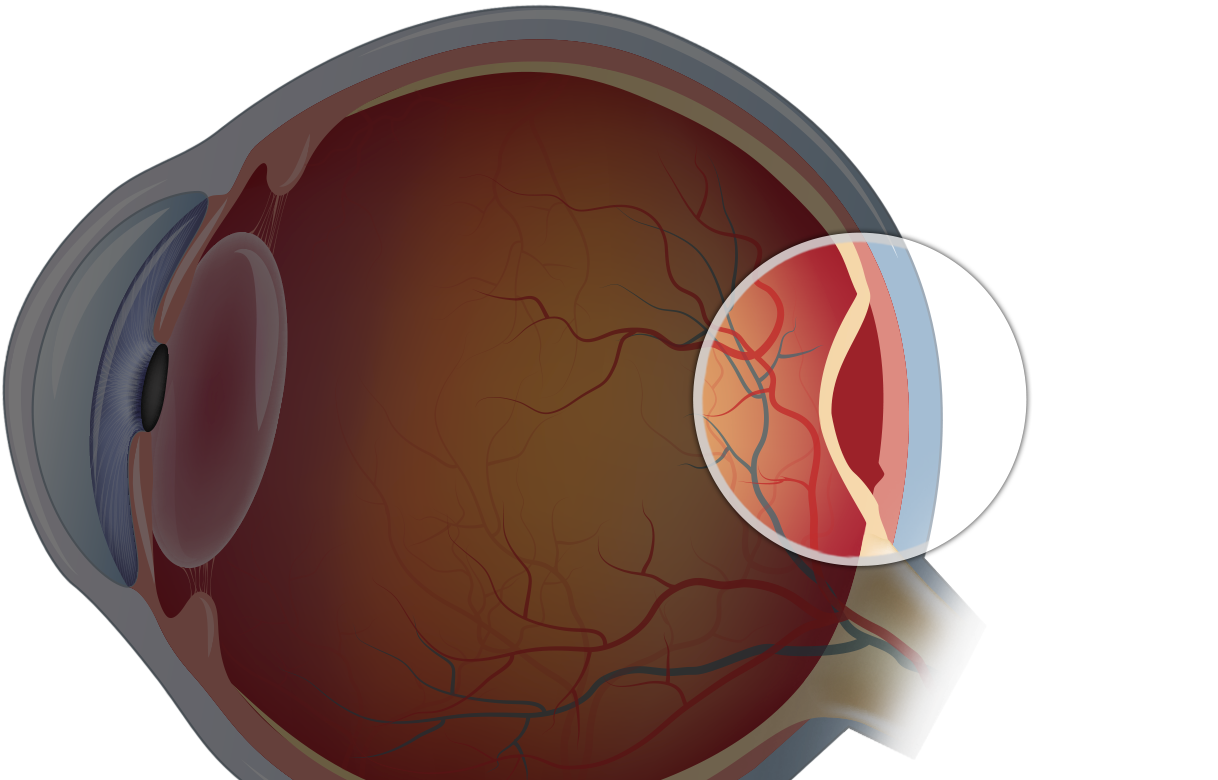Retinal Tear vs. Retinal Detachment

With this in mind, the team at Retina Associates would like to go over the differences between retinal tears and retinal detachment. You may be surprised to learn how different these conditions are, yet how they are ultimately interrelated.
About Retinal Tears
Retinal tears refer to small rips in the retinal tissue. The retina has not full detached, but potions of it are no longer attached to the back of the eye as it ought to be. A retinal tear may be a precursor to retinal detachment.
Causes of Retinal Tears
The most common cause of retinal tears involves the vitreous gel within the eyes. Sometimes the gel adheres to the retina and pulls on it over time. The pull by the vitreous gel can cause tears to form along the retina. Physical trauma can also cause or contribute to the formation of a retinal tear.
Signs and Symptoms of Retinal Tears
The most common signs and symptoms of retinal tears include:
- Sudden appearance of floaters
- Black spots in field of vision
- Flashes of light
- Blurry vision
- Darker/dimmer vision
- Loss of peripheral vision
Note that in some cases, a retinal tear may form without any noticeable symptoms.
Treatment for Retinal Tears
Retinal tears can be treated with a freezing procedure called cryotherapy, which essentially spot welds the torn portion of the retina back in place. Some low-risk tears may not require treatment and simply involve regular monitoring and adjustments to the patient’s lifestyle to promote healing and wellness.
About Retinal Detachment
Retinal detachment refers to the full lack of attachment of the retinal tissue along the back of the eye. This is more severe than retinal tears. The longer that a detached retina remains detached, the greater the risk of permanent vision loss.
Causes of Retinal Detachment
Like retinal tears, retinal detachment can be caused by the vitreous gel tugging at the retina and pulling away from eh back of the eye. Scar tissue on the retina can also contribute to detachment over time. Fluid may also accumulate beneath the retina over time, resulting in a higher risk of detachment.
As with tears, physical trauma can also contribute to the detachment of the retinas.
Signs and Symptoms of Retinal Detachment
The most common signs and symptoms of retinal detachment include:
- Sudden appearance of floaters
- Black spots in field of vision
- Flashes of light
- Blurry vision
- Darker/dimmer vision
- Loss of peripheral vision
You’ll note that the symptoms for retinal tears and retinal detachment are the same. Like retinal tears, retinal detachment is often painless.
Treatment for Retinal Detachment
Cryotherapy or laser therapy (photocoagulation) can be used to help weld the detached portion of the retina back in place. Retinal detachment may also be treated through the use of gas bubble injected into the eye to help push the detached tissue back in place. Other procedures include indenting the surface of the eye to press the retina back into position (scleral buckling), and replacing the vitreous gel in the eye (vitrectomy).
Risk Factors for Retinal Tears and Detachment
The most common risk factors for retinal tears and detachment are as follows:
- Advanced age (more common in people age 50 and older)
- Family history of retinal detachment
- Previous retinal detachment or tears
- Previous eye injury
- Previous eye surgery
- Previous severe eye disease
- Extreme myopia (nearsightedness)
Contact Retina Associates
For more information about treating retinal conditions of all kinds, be sure to contact the team at Retina Associates. Our doctors are here to help restore and improve your vision. Our Kansas City office can be reached by phone at (816) 505-3400, and our Topeka office can be reached at (785) 271-2200.
